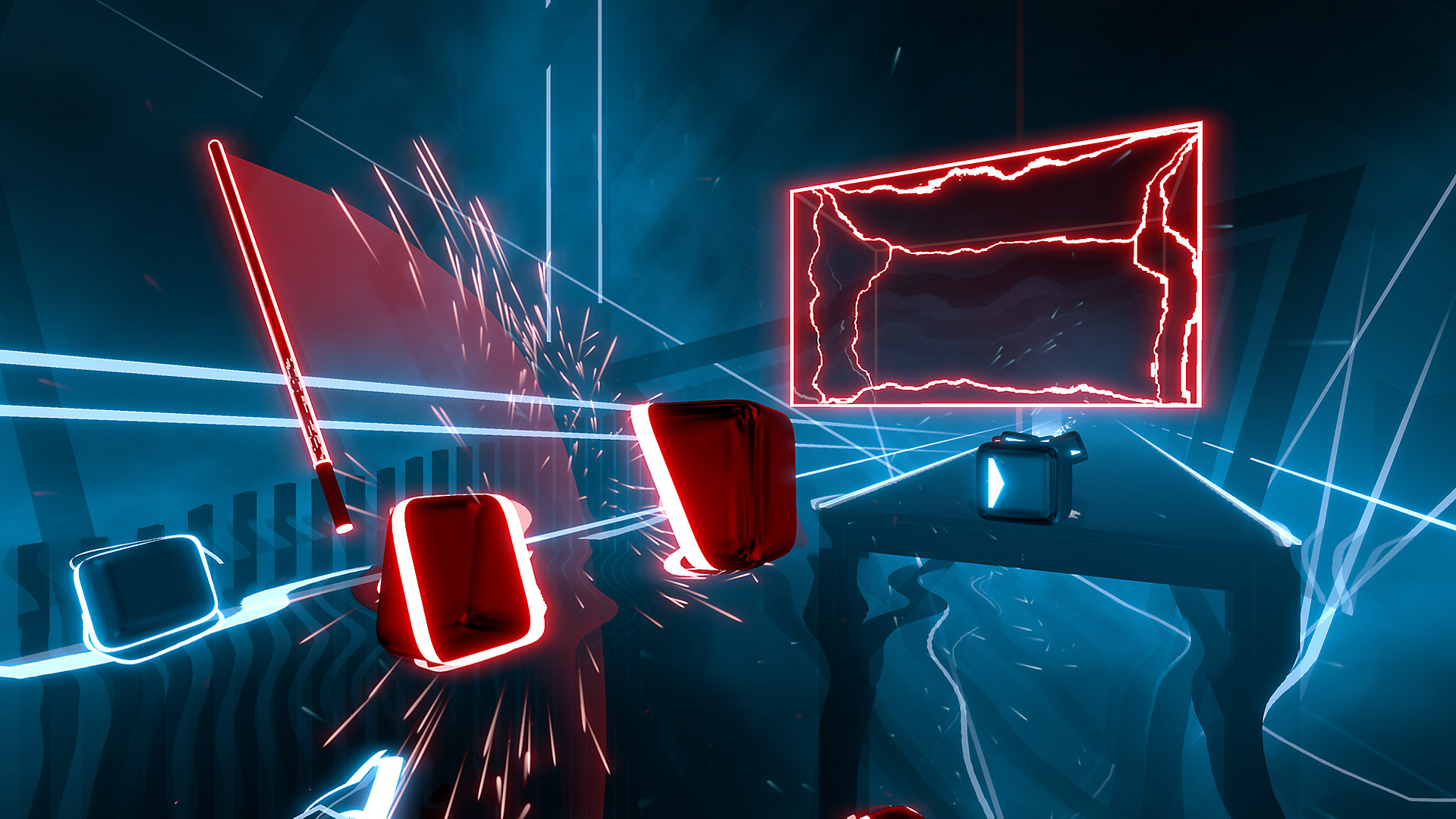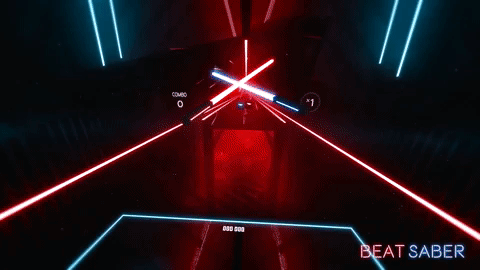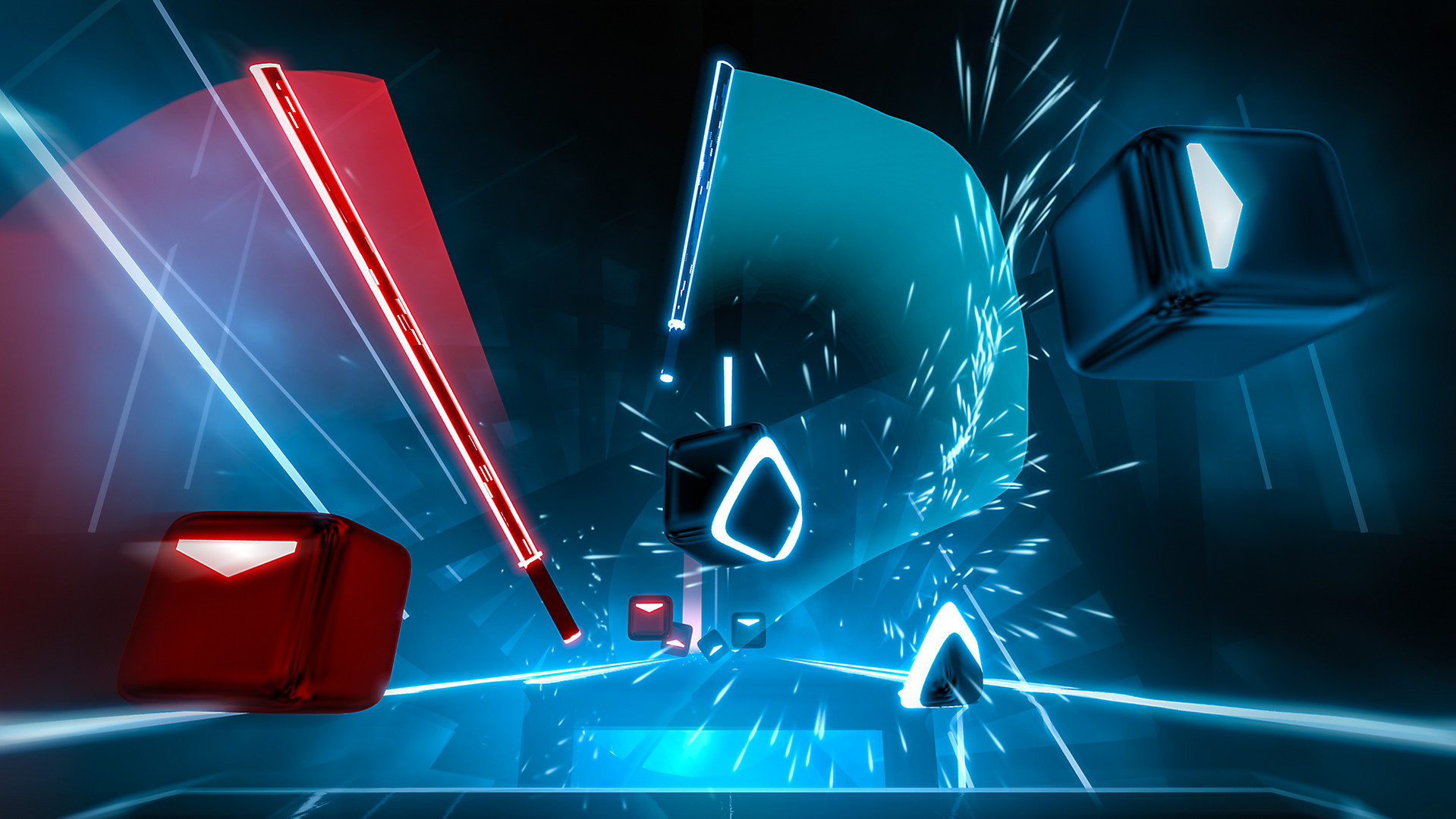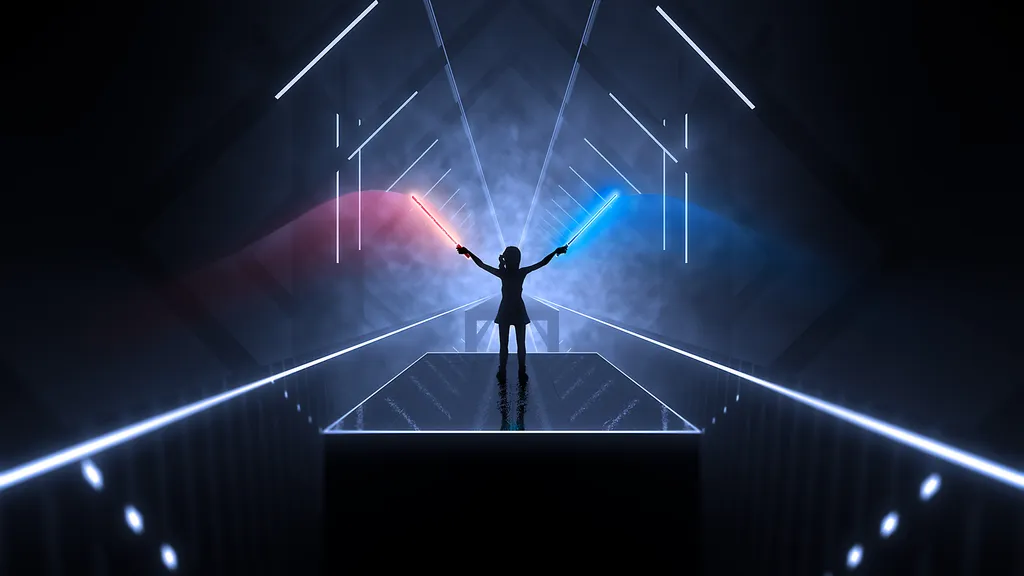Growing up, I was a DDR kid. I was never good enough to draw a crowd at arcades, but I could hang on most songs on any difficulty level and even owned a pad at home with several PS2 versions. After that I moved on to Guitar Hero and eventually Rock Band to scratch that rhythm game (and rock star fantasy) itch, further proving that it’s impossible to look cool with plastic instruments.
When Audioshield came out, I was a fan, but I’ve always felt like games that automatically generate levels based on any random song you pick just never feel as polished or cohesive. What made DDR and Rock Band great is how handcrafted and precise everything was. Now with Beat Saber, we’ve finally got that in an ultra-stylish package complete with glowing laser swords, banging music, and super addictive levels that are nearly impossible to put down. The PSVR edition adds even more to round out an excellent package.
Note: This review is strictly about the PSVR edition of Beat Saber, which includes content not previously released for the PC version. You can read here for our thoughts on the PC version, as well as here for details on adding custom songs.
The basic premise in Beat Saber is that you have two light saber-esque laser swords (one red and one blue) that you must use to slice boxes to the rhythm of the music. As the boxes approach they’ll either be red or blue in color, so you must slice the box with the right corresponding color saber. This is complicated further because each box also has an arrow showing you which direction you must slice it, plus large obstacles show up from time to time that you need to evade while still slicing boxes.
Throw in a handful of other curveballs like boxes that switch which side they’re on and it’s a perfect recipe for a game that’s dead simple to pick up and play on easy difficulties but nearly impossible to master on the highest settings.
Beat Saber works because the developers clearly put a lot of care into mapping each song to make sure it felt just right on all four (Easy, Normal, Hard, Expert) difficulty settings without being unfair. They’ve all got different speeds and beats per minute, ensuring that there’s something here to draw everyone in at least for a while.

Playing a song on Beat Saber for me usually involved a few different steps of mastery. I’d try it on Normal first, just so I could hear what it sounded like without much challenge. Then I’d step up to Hard and repeat it over and over until I got either a solid B or an A. Finally, I’d try and tackle the song on Expert and do my best.
If you miss too many boxes, slice them with the wrong saber, slice the wrong direction, or run into obstacles then all of those factors drain your energy meter. In order to get a higher score you’ve got to maintain your combo (that means not missing any) and — most importantly — you need to be accurate with your swings, making sure the angle is precise and you’re hitting the arrow on each box.
That sort of pixel-perfect accuracy isn’t a big deal on the lower settings, but when you’ve got a dozen boxes flying at you in all directions it becomes a bit harder to pay attention to the angle of your saber. Before I ever finished a single song on Expert I had finished all of them on Hard, which makes me feel like the difficulty curve is balanced — but not forgiving.

If you’re familiar with the PC VR version of the game, then you should know the PSVR release actually includes a surprising amount of new content. In addition to the five brand new songs (all of them are very tough — you can see Expert difficulty footage in the video near the top) there’s also new practice settings for each song which let you slow down or speed up any track as well as skip ahead to specific parts to focus on.
Other than the new songs (16 total now including the original 10 and the single free release since Early Access) the best addition in this version of Beat Saber is the Campaign mode. You progress through dozens of missions that have specific goals (like getting a certain score) and overcome challenging, unique modifiers that alter the game. It’s a fun way to learn the songs and gradually unlock things. Thankfully Quick Play and Party mode have all songs and basic modifiers (like no fail or no arrows) available from the very start. All of the new content will come to the PC version eventually. And comparatively, the PSVR version won’t have any custom song support which is arguably the game’s best feature.
The biggest factor for Beat Saber on PSVR versus PC headsets is the tracking quality. Since Sony’s headset only uses a single camera it’s just not as good as Rift or Vive. When ducking down the camera would lose my controllers at times and if my arms occluded each other the sabers would drift for a fraction of a second before returning. Rarely did this affect gameplay, but if you’re obsessed with hitting every note and getting every trophy, it might end up being a bit frustrating.

Beat Saber on PSVR is exquisite. Overall it’s a more polished, feature-packed, and expanded version of the Early Access PC title, while still retaining the core of what made it a viral sensation in the first place. I rarely missed the better tracking afforded by the Rift, Vive, and Windows VR platforms and actually found myself enjoying the crisp visuals and appropriately shaped PS Move controllers throughout it all. The new tracks are almost all excellent, the campaign mode is a great addition, and it overall feels like a complete game now. If the track list were just a bit longer (16 songs is pretty small) with the long-discussed multiplayer support already in, then it’d only be even better. But still — as it stands — Beat Saber is a true gem and is easily the most addictive VR game to date.
Beat Saber is available as of today on PSVR for $29.99. Additional content will be made available over time in the form of DLC. Beat Saber is also currently in Early Access on PC VR headsets. Read our Game Review Guidelines for more information on how we arrived at this score.

























